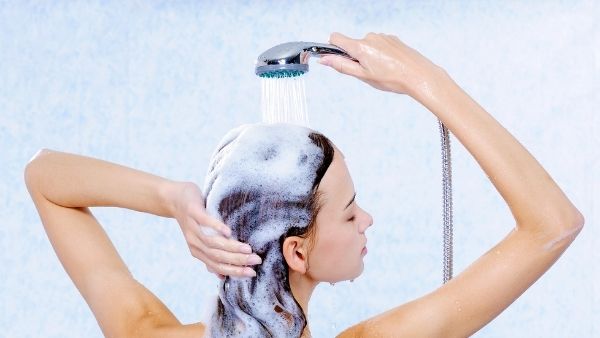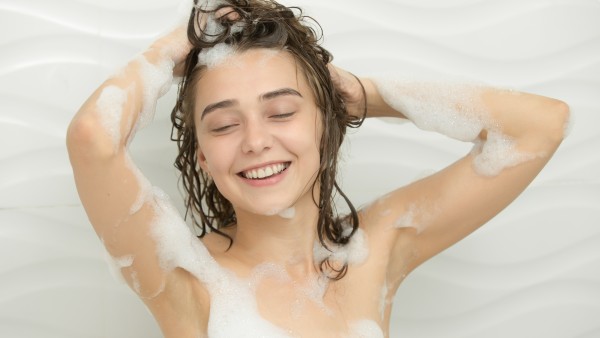Just In
- 9 hrs ago

- 10 hrs ago

- 13 hrs ago

- 13 hrs ago

Don't Miss
- Movies
 Arti Singh-Dipak Chauhan Wedding: Priyanka Chahar Choudhary-Ankit Gupta Steal Show With Their Stunning Looks
Arti Singh-Dipak Chauhan Wedding: Priyanka Chahar Choudhary-Ankit Gupta Steal Show With Their Stunning Looks - News
 MEA Dismisses US Human Rights Report On Manipur As 'Biased And Misinformed'
MEA Dismisses US Human Rights Report On Manipur As 'Biased And Misinformed' - Finance
 1:5 & 1:2 Split, Rs 6/Sh Dividend: Fertilizer Stock Coming Up With 600% Payout; Record, Payment Dates Fixed
1:5 & 1:2 Split, Rs 6/Sh Dividend: Fertilizer Stock Coming Up With 600% Payout; Record, Payment Dates Fixed - Sports
 SRH vs RCB: 'Statpadder' Virat Kohli faces Fans Wrath after 118.3 Strike Rate
SRH vs RCB: 'Statpadder' Virat Kohli faces Fans Wrath after 118.3 Strike Rate - Automobiles
 Royal Enfield Unveils Revolutionary Rentals & Tours Service: Check Out All Details Here
Royal Enfield Unveils Revolutionary Rentals & Tours Service: Check Out All Details Here - Technology
 Elon Musk’s X Is Launching a TV App Similar to YouTube for Watching Videos
Elon Musk’s X Is Launching a TV App Similar to YouTube for Watching Videos - Education
 AICTE introduces career portal for 3 million students, offering fully-sponsored trip to Silicon Valley
AICTE introduces career portal for 3 million students, offering fully-sponsored trip to Silicon Valley - Travel
 Escape to Kalimpong, Gangtok, and Darjeeling with IRCTC's Tour Package; Check Itinerary
Escape to Kalimpong, Gangtok, and Darjeeling with IRCTC's Tour Package; Check Itinerary
What Is Reverse Hair Washing? Pros And Cons And How To Do It
Have you ever heard of reverse washing? It is nothing but the reverse application of products, that is first conditioning the hair, deep conditioning, and then following up with a cleanser or traditional shampoo.
Reverse Hair Wash: Doing It Right, The 'Wrong' Way
As a rule, we wash our hair in the following sequence: wet the hair, apply shampoo, then apply conditioner. However, reverse washing requires that you carry out the third step as the first. But why?

The concept behind reverse hair washing is that the conditioner left on first will infuse nutrients into hair strands, while the porosity of the keratin protein will be open due to the pH of the water. If the hair follicles are clean and clear, they are more receptive to the nourishing hydration of the conditioner. Hair conditioners play an important role in any hair care routine, as they hydrate and nourish the hair as well as lock in moisture, maintaining healthy, shiny, elastic hair.
How does reverse wash benefit your hair?
- By reversing the washing process, you are able to obtain conditioning of the hair shaft without leaving a layer of conditioner on the scalp.
- Since reverse washing immediately follows the conditioner with shampoo, any residue from the conditioner that might contribute to acne will also be removed.
- The benefits of reverse washing are primarily related to hydration and volume. Overall, this will help with the health and hydration of the hair and the repair of the hair before the cleaning process begins.
- Reverse washing may help to mask thinning hair.
- As an additional benefit, your hair may appear to be cleaner for longer, as the conditioner, when rinsed off, as opposed to being washed off with shampoo, may cause greasier hair sooner than with a reverse wash.
Does reverse washing damage your hair?
It is important to note that reverse washing may be beneficial for some natural hair types; however, people with coarse or tightly coiled hair may not experience the same benefits.
Although reverse washing is capable of simulating fuller hair, this method is not a viable alternative to professional hair loss treatments. A specialist's expert diagnosis and treatment plan are essential for achieving real increases in density or mitigating losses.

How To Do Reverse Hair Wash?
- Instead of starting with shampoo, spritz your hair with conditioner after wetting it.
- Massage or comb the conditioner thoroughly through the hair from the scalp to the ends for up to five minutes.
- Focus on the bottom two-thirds of the scalp, where the hair receives the least amount of natural sebum.
- After five minutes, rinse hair with warm water and wash with a small amount of shampoo.
- Rinse thoroughly.
On A Final Note...
You may choose to use reverse washing every time you wash your hair if you find that it is effective for the type of hair you have.
-
 pregnancy parentingIndia's Maternal Mortality Ratio Drops; Healthcare Initiatives A Boon
pregnancy parentingIndia's Maternal Mortality Ratio Drops; Healthcare Initiatives A Boon -
 kids5 Common Infections In Children And What Parents Can Do About It
kids5 Common Infections In Children And What Parents Can Do About It -
 pregnancy parentingJennifer Aniston Talks About Infertility, IVF; Says, 'The Ship Has Sailed'
pregnancy parentingJennifer Aniston Talks About Infertility, IVF; Says, 'The Ship Has Sailed' -
 basicsWorld Fertility Day: The Decline of Fertility Rate In India: What Does It Mean?
basicsWorld Fertility Day: The Decline of Fertility Rate In India: What Does It Mean? -
 basicsExpert Article: Tips For Travelling During Pregnancy This Festive Season
basicsExpert Article: Tips For Travelling During Pregnancy This Festive Season -
 kidsBenefits Of Egg For Babies; What Is The Right Age To Include Eggs In A Baby's Diet?
kidsBenefits Of Egg For Babies; What Is The Right Age To Include Eggs In A Baby's Diet? -
 basicsWhat Are Contraceptive Injections? How Do They Work? Advantages And Disadvantages
basicsWhat Are Contraceptive Injections? How Do They Work? Advantages And Disadvantages -
 basicsKarva Chauth 2022: Is It Safe To Fast During Pregnancy? Dos And Don'ts For Pregnant Women During Karva Chauth
basicsKarva Chauth 2022: Is It Safe To Fast During Pregnancy? Dos And Don'ts For Pregnant Women During Karva Chauth -
 basicsWorld Mental Health Day 2022: Expert Opinion On Impact Of Infertility On A Couple’s Mental Health
basicsWorld Mental Health Day 2022: Expert Opinion On Impact Of Infertility On A Couple’s Mental Health -
 prenatalExpert Article: Getting Ready For Pregnancy At An Advanced Age
prenatalExpert Article: Getting Ready For Pregnancy At An Advanced Age -
 kidsTwin Viral Concerns Of COVID-19 And Monkeypox In Kids: What Parents Should Know
kidsTwin Viral Concerns Of COVID-19 And Monkeypox In Kids: What Parents Should Know -
 kidsWhy Do Kids Get Worms? How To Prevent Worms In Children?
kidsWhy Do Kids Get Worms? How To Prevent Worms In Children?


 Click it and Unblock the Notifications
Click it and Unblock the Notifications



